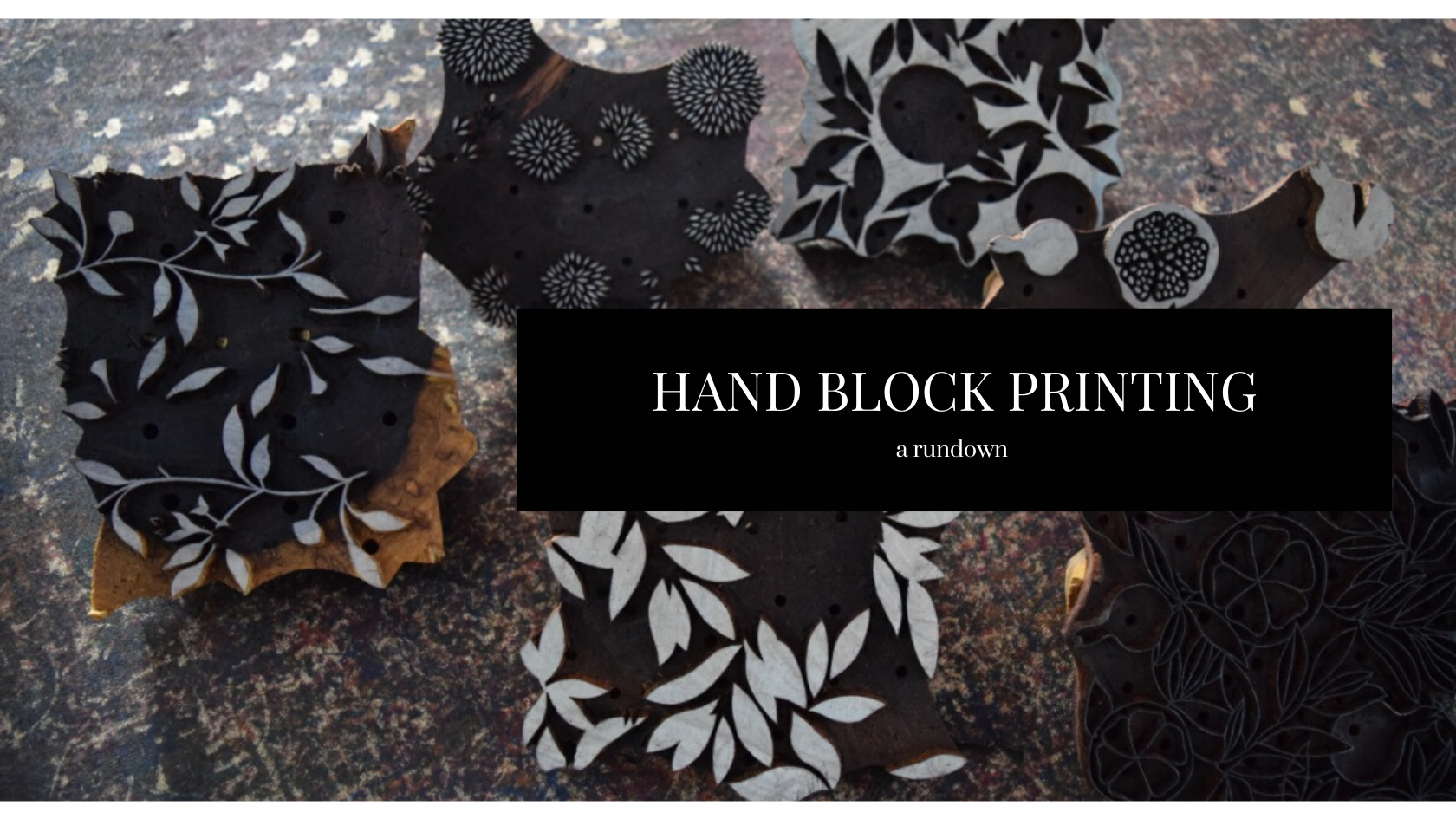So, after a lot of time and thinking (1.5 years to be precise) , here we are with our first Blog Post or "Fancy Stories" what we refer it to as, and what could have been a better topic than writing up a Rundown on Hand Block Printing.
To all of you who know about us, knows how much we admire Hand block printing and to those of you who are new on our website, well, we admire Hand block printing a little TOO much.
WHY? Let's get to it.
Starting with the basics. What is Hand block printing?
It’s pretty much exactly what it sounds like, but let’s break it down. Hand block printing is an age old art practised in India, printed by the artisanal hands using hand carved wooden blocks on various home grown fabrics like varieties of cotton and silk. (Not as easy as writing it down, so we'll break it down later)
A little history, how old is this art?
Astounding to discover that hand block printing has been around Rajasthan for nearly 400 years now (Yep, it's the art form that's been here and is still practised from 4 centuries). The gift of hand block printing was given to Jaipur by the Chhipa community that was known to live in Bagru village. Their technique was then adopted wholeheartedly in Sanganer (south of Jaipur) as well and in parts of Jodhpur.
Done with the basics and history here, let's break down the actual process.
Its a 4 level process that goes into printing the fabric.
- Designing
- Carving
- Colour Making
- Finally, printing the fabric.
Designing: The first and the main task is the designing of the print, major sanganeri prints that you'll find are most often a traditional Indian motif, which is typically influenced by the nature, beliefs, and customs of the region. These motifs regularly take the form of geometric patterns, animals, or plants.
The pattern is designed and created to fit in wooden blocks in a way that it can be continously printed in the entire fabric. The prints, usually have 3-6 colours which makes them attractive, the more attractive, more intricate the design is, the more the number of colours involved, the more wooden blocks.
Carving: These designs are then traced on to the wooden blokcs, generally made of teak by the master craftsman and are then carved by the artisans using hands. The designs are generally carved onto blocks that range from 6x8 inches to 10x12 inches. These blocks are then soaked into oil for atleast a day or two to make them last longer (some of them lasts a decade). It's a long process, every motif, every detail is carved by hands. don't believe us? Watch the video below
Colour Making: Another creative process, finalising the shades and then mixing the colours using dyes and creating various shades is a beautiful and alluring process. It's the art of mixing colour binder, dye, fixer and water which creates the beautiful shades that we see on the prints.

These colours are then transferred into the trays, with various levels of layers as per the intensity of the colour is required on to printing.
Printing of the Fabric: Printing of the fabrics is done on the tables ranging from 5 mtrs to 10 mtrs long with 4 layers of fabric below the actual printing fabric which soaks the extra colour.
Fabric is laid flat on the table, and the printing starts by dipping the wooden blocks in the colour trays.
As we stated earlier, generally every print contains 3-6 colours, see our reference image of our Talia print which is printed in 4 colour layer by layer.

1. Blue: the blue colour is printed as the base or in local language "Gadh"
2. Yellow: depending upon the visiblity and layering of colours, yellow colour is printed as its the second base colour.
3. Grey
4. Pink: completing the print.
This printed fabric is than dried in sun, which helps in fixing the colour on to the fabric. This fabric is then washed to check colour bleeding and removing extra colour from the fabric and then it goes for curing, in general term getting the fabric ironed and making the print fixed on the fabric.
So, here it is, the process of hand block printing which excites us creatively.
Hope you enjoyed reading it.




